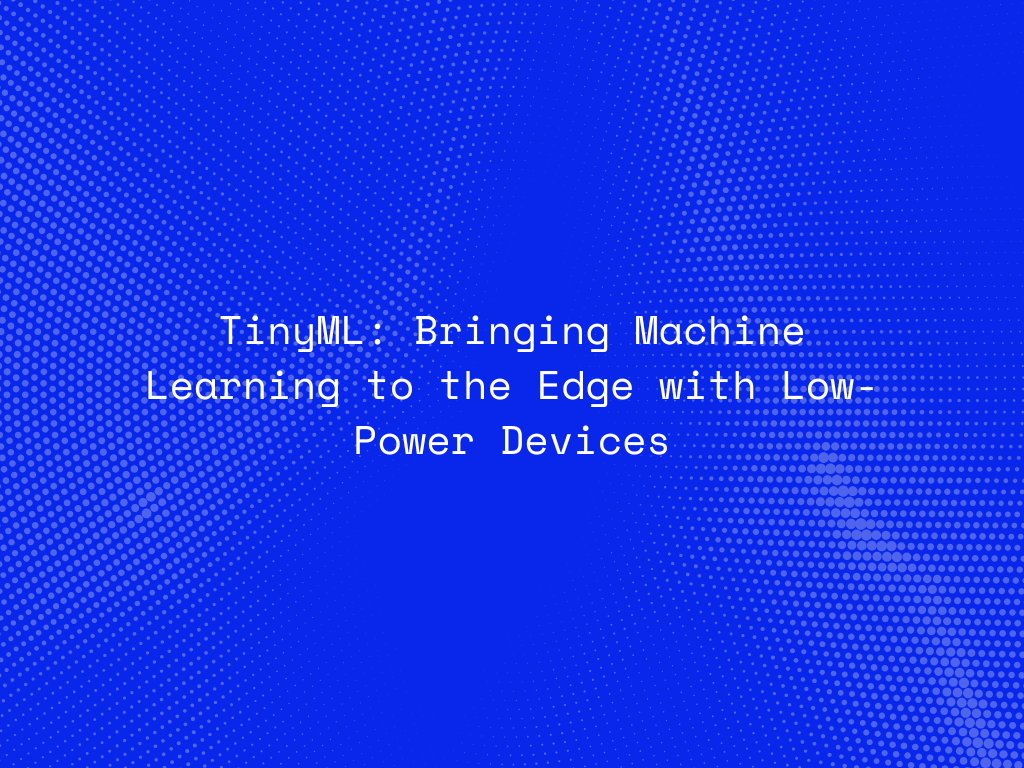The rise of TinyML is transforming the world of machine learning by enabling AI to run on low-power edge devices. As businesses seek faster and more efficient data processing, TinyML allows machine learning models to operate directly on devices like sensors, microcontrollers, and other embedded systems. This shift is unlocking new possibilities in industries ranging from healthcare to IoT by reducing latency, improving privacy, and conserving energy.
What is TinyML?
TinyML refers to the application of machine learning on resource-constrained devices. These devices typically have limited memory, processing power, and energy resources, but with TinyML, they can still perform advanced tasks like data analysis and pattern recognition. TinyML brings the benefits of AI to devices at the edge, enabling them to process data locally without relying on cloud-based infrastructure.
Benefits of TinyML for Edge Computing
- Low Power Consumption: TinyML models are designed to run on minimal power, making them ideal for devices that rely on batteries or energy-harvesting systems.
- Real-Time Processing: By performing data processing at the edge, TinyML enables real-time decision-making, which is critical for applications like autonomous vehicles, wearables, and industrial automation.
- Enhanced Privacy: With TinyML, data processing happens on-device, reducing the need to send sensitive data to the cloud and enhancing user privacy and data security.
- Reduced Latency: By eliminating the need to communicate with cloud servers, TinyML significantly reduces latency, ensuring faster response times in critical applications.
Key Applications of TinyML
- Wearable Health Devices: TinyML is being used in wearable technologies to monitor vital signs, detect health anomalies, and provide real-time feedback to users without draining battery life.
- Smart Home Devices: In smart homes, TinyML enables devices like thermostats, cameras, and voice assistants to function more intelligently, learning user preferences while operating efficiently.
- Industrial IoT: TinyML enhances the capabilities of industrial IoT devices by allowing them to monitor machinery, predict maintenance needs, and optimize operations with minimal energy consumption.
- Agriculture: In agriculture, TinyML-powered devices help monitor environmental conditions, detect pests, and optimize water usage, all while operating on solar or battery power.
Challenges of Implementing TinyML
While TinyML offers a host of benefits, there are challenges to consider:
- Model Complexity: TinyML models must be highly efficient and optimized to fit within the hardware constraints of edge devices, which limits the complexity of tasks they can perform.
- Limited Resources: TinyML devices have constrained memory and processing power, which can affect their ability to run more advanced AI algorithms.
- Deployment at Scale: Deploying and updating TinyML models across a large network of devices can be logistically challenging, requiring robust management tools and strategies.
The Future of TinyML
The future of TinyML lies in its ability to drive the next generation of smart devices. As more businesses adopt edge computing, the demand for low-power AI solutions will continue to grow. With advancements in hardware and software optimization, TinyML will enable even more sophisticated applications, from smart cities to environmental monitoring, making AI ubiquitous in our daily lives.
Conclusion:
TinyML is at the forefront of bringing machine learning to the edge, offering businesses and consumers alike the power of AI in compact, low-power devices. As the technology continues to evolve, it will unlock new possibilities for industries worldwide, making intelligent devices more efficient, responsive, and sustainable.




